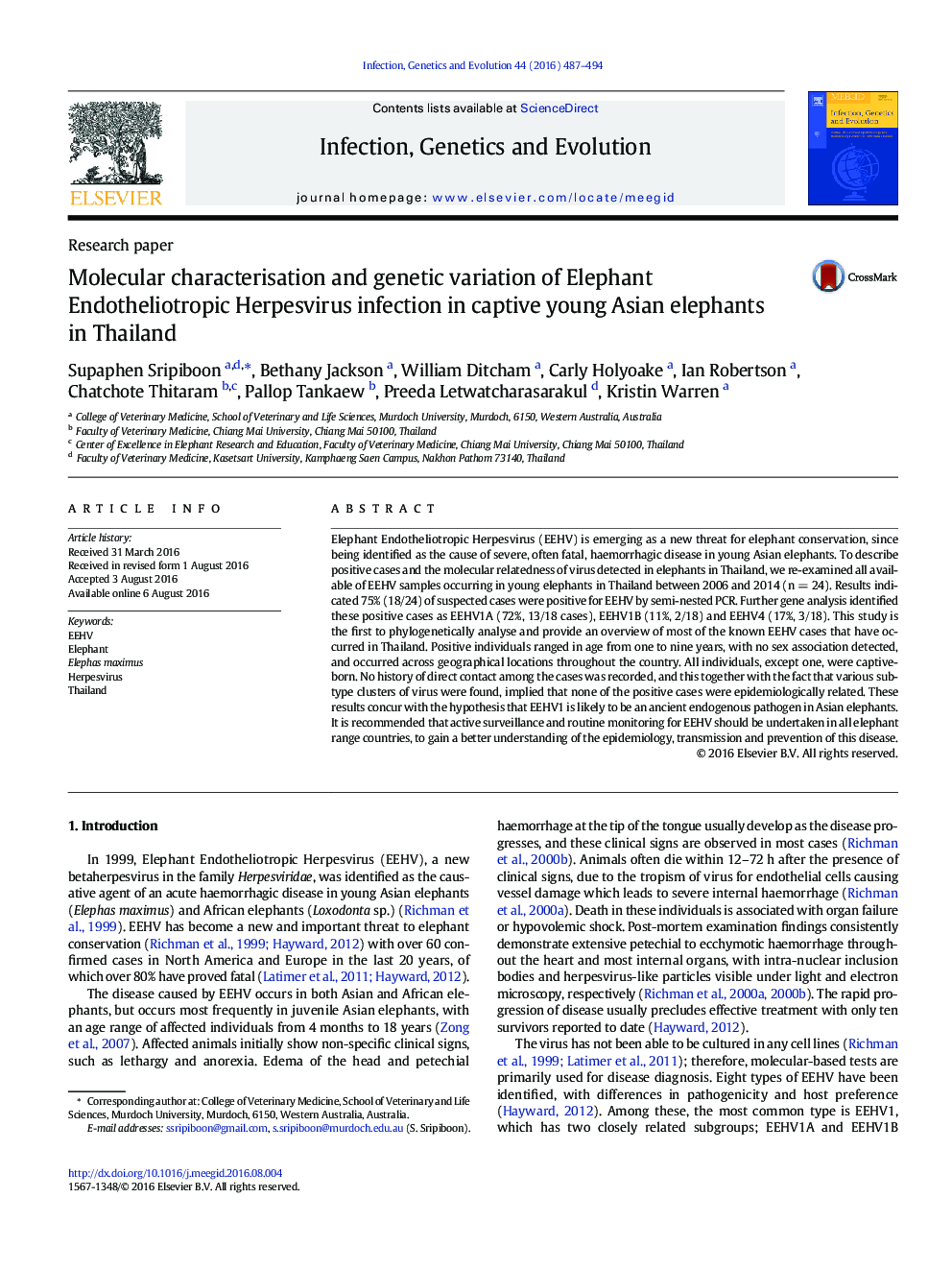| کد مقاله | کد نشریه | سال انتشار | مقاله انگلیسی | نسخه تمام متن |
|---|---|---|---|---|
| 5908220 | 1570159 | 2016 | 8 صفحه PDF | دانلود رایگان |
- This study re-examined suspected EEHV cases occurring in Thailand between 2006 and 2014.
- 18 out of 24 suspected cases were positive for EEHV and the most common type was EEHV1A.
- EEHV cases ranged from 1 to 9Â years with no sex association.
- Based on history genetic analysis, none of the EEHV cases were epidemiologically related.
Elephant Endotheliotropic Herpesvirus (EEHV) is emerging as a new threat for elephant conservation, since being identified as the cause of severe, often fatal, haemorrhagic disease in young Asian elephants. To describe positive cases and the molecular relatedness of virus detected in elephants in Thailand, we re-examined all available of EEHV samples occurring in young elephants in Thailand between 2006 and 2014 (n = 24). Results indicated 75% (18/24) of suspected cases were positive for EEHV by semi-nested PCR. Further gene analysis identified these positive cases as EEHV1A (72%, 13/18 cases), EEHV1B (11%, 2/18) and EEHV4 (17%, 3/18). This study is the first to phylogenetically analyse and provide an overview of most of the known EEHV cases that have occurred in Thailand. Positive individuals ranged in age from one to nine years, with no sex association detected, and occurred across geographical locations throughout the country. All individuals, except one, were captive-born. No history of direct contact among the cases was recorded, and this together with the fact that various subtype clusters of virus were found, implied that none of the positive cases were epidemiologically related. These results concur with the hypothesis that EEHV1 is likely to be an ancient endogenous pathogen in Asian elephants. It is recommended that active surveillance and routine monitoring for EEHV should be undertaken in all elephant range countries, to gain a better understanding of the epidemiology, transmission and prevention of this disease.
Journal: Infection, Genetics and Evolution - Volume 44, October 2016, Pages 487-494
